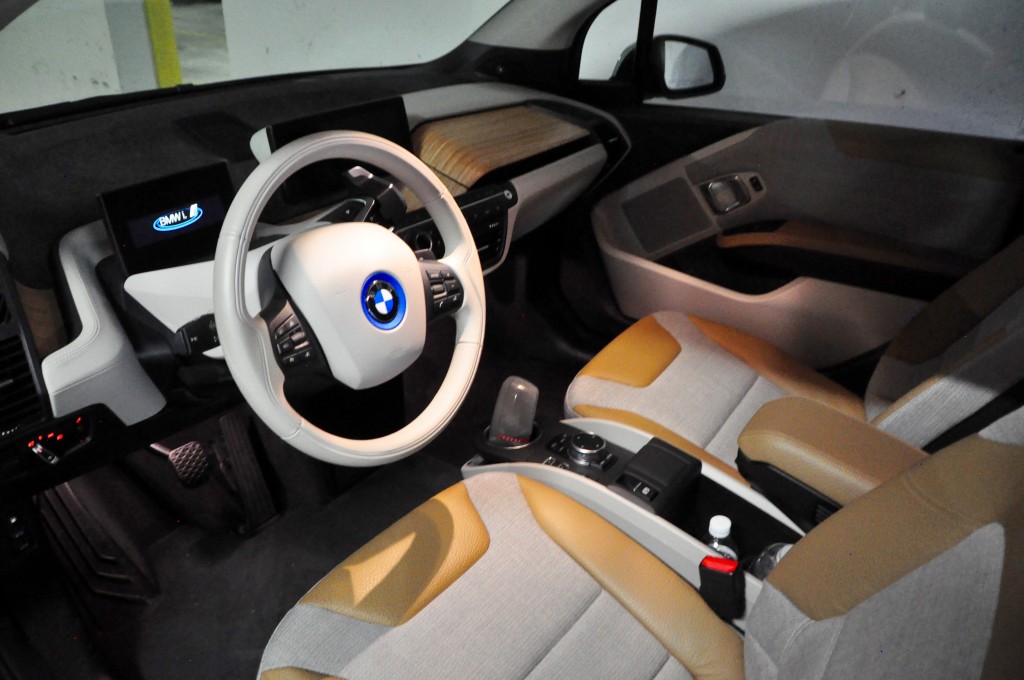2015 BMW i3 – Road Test and Review
The dashboard is a mixture of eucalyptus wood, leather, and carbon fiber reinforced plastic, while the remainder of the cabin uses wool, leather, and metal to give it a polished and high-tech look. The wood’s appearance becomes richer over a period of time. It will be rather surprising if the car doesn’t find its way into one or another, modern art museum’s permanent collection.
The i3 is designed for four and is comfortable for four as well. Think of it as a small but idiosyncratic people mover with cargo space.
The BMW i3 is one of the lightest vehicles in its class, tipping the scales at 2,799 pounds (1,270 kilograms), or 3,064 (1,390) with the range extender. The Ford Focus Electric, Kia Soul EV, and Nissan Leaf are in the 3,300- to 3,700-pound (1,497- to 1,678-kilogram) range and closest in weight, the Fiat 500e, weighs in at 2,980 pounds (1,352 kilograms).
DRIVING THE BMW I3
Since it’s a BMW, it’s incumbent on the i3 to provide a measure of Freude am Fahren, the Joy of Driving, the slogan BMW has used for decades to describe the feeling of driving one of its cars.
There’s no sport mode but the drive mode selector offers Comfort, Eco, and Eco Pro+, the latter involving a limit of 56 mph (90 km/h) and zero air conditioning.
Lacking a Level 2 charger, we used the i3’s 110-volt wall charger, which did a good job fully charging the vehicle overnight. A full charge at 110 volts takes roughly 12 hours. The EPA says that the 22 kWh battery pack will give the car roughly 74 miles (119 kilometers) between charges.
























